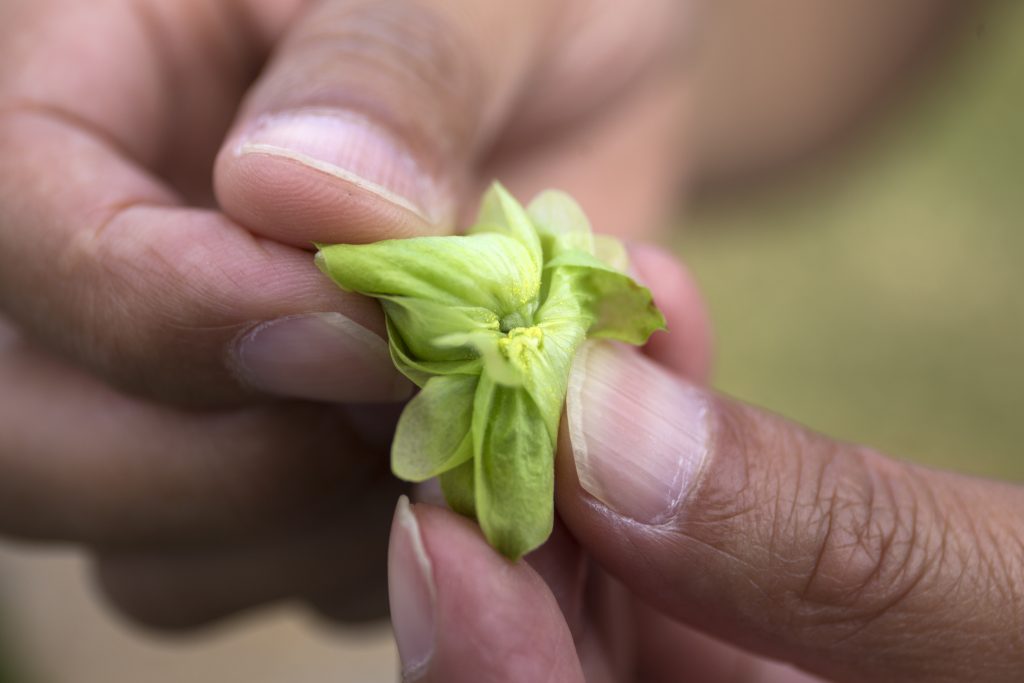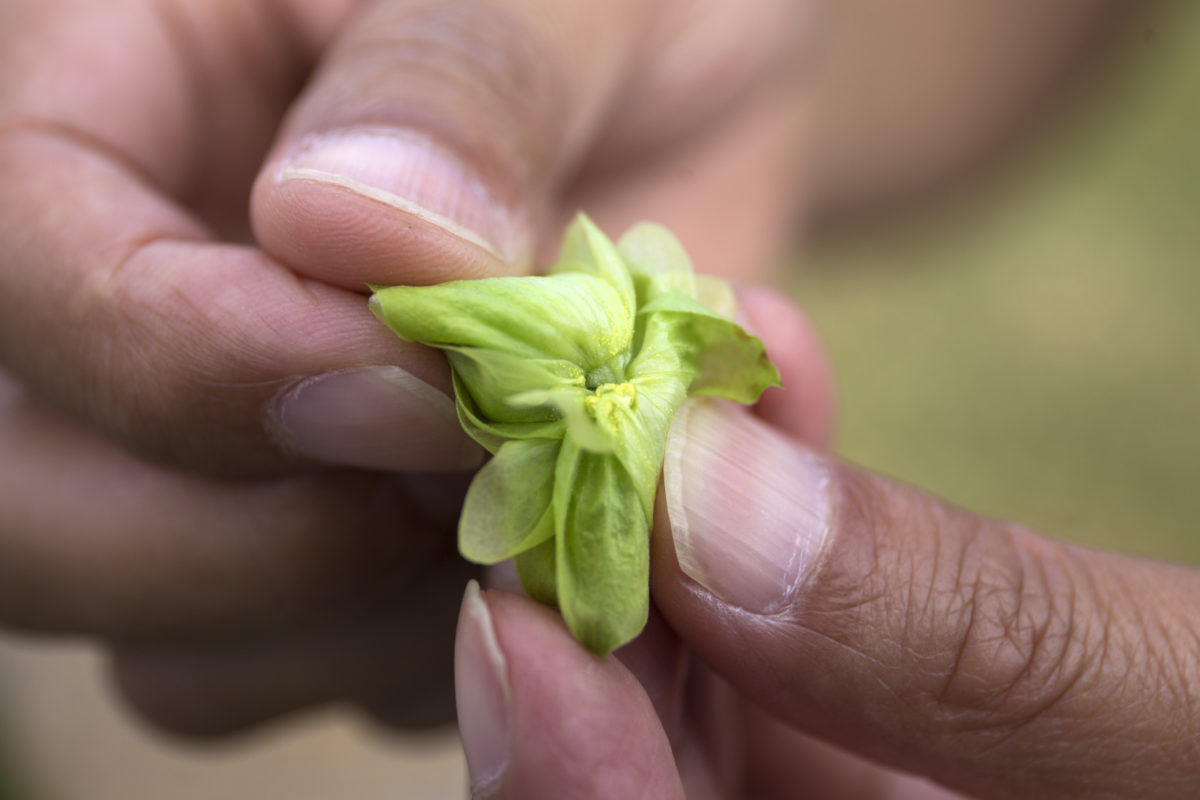By Karla Arboleda
Breweries and drinkers alike can thank researchers for the way craft beer is turning out in Florida.
While the deep Southeast normally does not have an ideal climate for growing hops, the University of Florida Institute of Food and Agricultural Sciences Gulf Coast Research and Education Center (GCREC) has been on a mission to make it work. Shinsuke Agehara, a researcher at the GCREC, feels craft beer and hops can only become more popular.

“We have a huge craft beer industry; Florida ranks number 5 in the United States in terms of number of craft breweries,” Agehara says. “Hops is a crop that requires very specific climate, (and) one of the key climate factors is the length of day.”
Hop growers have typically opted to hone their craft in the northwestern part of the country. The crop requires 15 to 16 hours of day length daily to avoid flowering, which is what a state like Washington naturally offers. Agehara focuses on testing variables to make this work in Florida.
“(Growers) have to use supplemental lighting to change the day lengthin the field so (they) can control the timing of flowering,” Agehara says, noting that LED lights are used at the GCREC. “After that, (growers) have to use the right design of the trellis. They have to use the optimal plant spacing. They have to use the optimum amount of fertilizer and water.”
Researchers at the GCREC have already seen success with hops. Certain varieties are proven to be better than others, but Agehara wants to dedicate more time to the program to establish solid data.
“We have found that Cascade is the most promising variety because of the yield and also because of the resistance to nematodes,” Agehara says. “This variety can break the dormancy earlier than other varieties, meaning it can start the spring season earlier.”
Despite the youth of hops research in Florida, the yield numbers show promise for the industry.
“We need another year of data to see the maximum yield potential,” Agehara says. “I think it’s going to benefit not just growers, but also the craft beer industry.”










